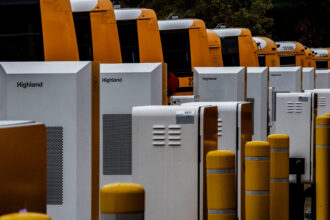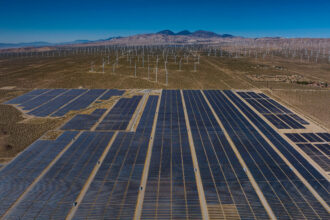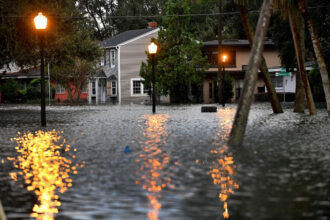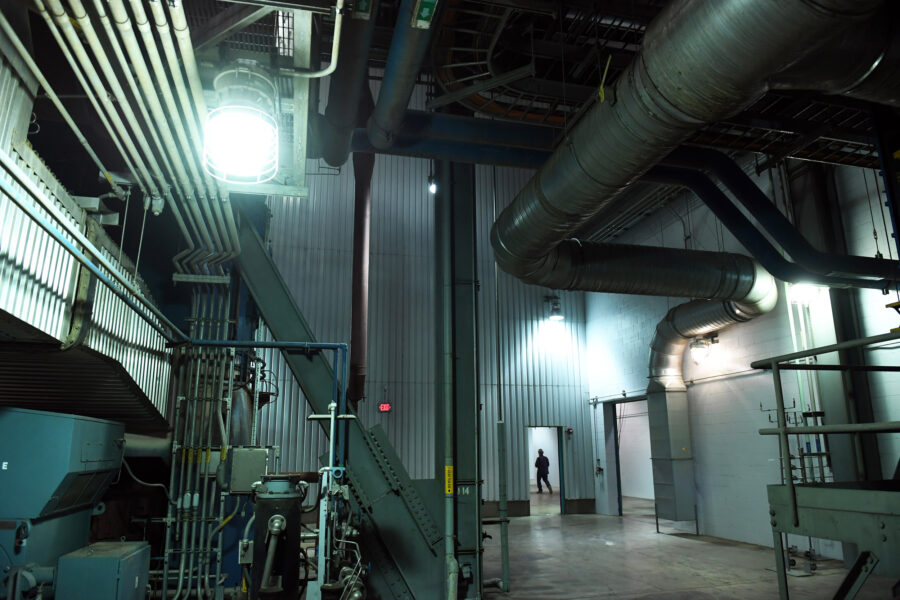When talking about the growth of renewable energy, I often say it’s not notable when wind, solar or other technologies reach a record high, because they should be doing that every year.
Then 2023 came along.
For the first time in more than a decade, the United States had a decrease in utility-scale electricity generation from renewable sources, according to the Energy Information Administration.
The decrease was small—0.8 percent—but it’s still significant considering substantial growth is considered “normal.”
I set out this week to understand what factors led to this surprising setback. So I stepped into the office, via a video call, of Mike Augustyniak, director of meteorology at WCCO, a television station in Minneapolis.
Why talk to a meteorologist about a problem of energy economics? It turns out that the big issue behind the drop in renewable energy generation was weather, including drought and a lack of strong winds.
“I’ve been forecasting for 27 years, and it’s unlike anything I’ve ever seen,” Augustyniak said.
He was referring to a high pressure weather system that parked over Canada for much of last summer, helping to block warm fronts and cold fronts— and the stronger winds associated with them—that usually would flow across much of Canada and the Upper Midwest.
For people on the ground, a high pressure system feels pretty good, with low humidity and a low chance of precipitation, Augustyniak said. But if it goes on too long, things go awry.
“We’ve just baked all the moisture out of the earth, because we did not have any rainfall to replace what would normally kind of evaporate during a nice sunny day,” he said.
One consequence of the lingering high pressure system was wildfires in Canada, which sent smoke far and wide.
Another consequence: The wind didn’t blow with as much force as before.
Wind farms are the country’s largest source of renewable electricity, and their output was down 2.1 percent in 2023 compared to the prior year.

The results varied a lot by state. Texas, the country’s wind energy leader, increased its generation from wind farms by 4.4 percent. Oklahoma, which ranks third in wind power, was up 0.5 percent.
But Iowa, the second-leading state for wind power, was down 8.5 percent. Among the others with big percentage decreases were North Dakota, down 9.6 percent; Wyoming, down 9.2 percent; and South Dakota, down 8.8 percent.
The drop in U.S. wind power came despite an increase, albeit a small one, in the number of wind farms. The country’s wind farms had 144 gigawatts of capacity in 2023, up from 137 gigawatts in the prior year, according to the EIA.
Wind farm development, offshore and onshore, has been slowed by many factors, such as parts shortages and difficulty obtaining permits. Those obstacles are among the reasons that wind energy generation was down last year.
Hydropower, the second-leading source of renewable electricity, was down 5.9 percent due in large part to drought that was reducing the flow of water through hydroelectric dams. This affected hydropower in some states that also had a decrease in wind power, such as Washington, but drought conditions also existed in other parts of the country.

Utility-scale solar power stood out for its rapid growth, rising by 14.4 percent over the previous year. But utility-scale solar is still relatively small in the country’s electricity mix, generating less than half as many gigawatt-hours as wind.
I’m not going to sugarcoat what was a disappointing year for renewable electricity growth. The United States needs to vastly increase the amount of electricity it gets from renewable sources, and a decrease, even a small one, is not progress.
But it is only one year, and it could be an anomaly. I spoke with several people who said wind energy generation looked bad in 2023 partly because 2022 was unusually windy.
And—bear with me here—there are several ways to calculate renewable electricity generation that show growth in 2023 compared to 2022.
If small-scale solar, which is not a utility-scale resource, is included along with utility-scale resources, then renewables generation was up by 0.5 percent.

And renewables’ share of the country’s electricity increased just a bit. This is because the size of the overall pie shrank, with a 1.2 percent decrease in generation from all utility-scale sources, due mostly to mild weather that decreased power demand. Renewables were 21.4 percent of the total in 2023, up from 21.3 percent.
But even with adjustments to make the numbers look a little better, the results are nowhere close to what’s needed.
One of my questions for 2024 and beyond is whether high pressure systems like the one we saw last summer are going to become more common to the point that grid operators and wind farm owners need to adjust their expectations.
Augustyniak said the larger dynamic is that the jet stream—the band of winds that flow from west to east—is slowing and researchers are trying to understand the relationship between this shift and climate change. A slower jet stream contributes to an increase in the frequency of weather systems like the one in Canada and the Midwest last summer, with dry conditions and low wind speeds.
If you’re frustrated to learn that climate change may be contributing to weather patterns that make wind energy less predictable, I’m right there with you.
Other stories about the energy transition to take note of this week:
South Fork Wind Just Became the US’s First Complete Utility-Scale Offshore Wind Farm: South Fork Wind, an offshore wind farm that will send power to Long Island, New York, has completed installation of all 12 turbines, as Michelle Lewis reports for Electrek. The 132-megawatt project was developed by Ørsted, the Danish energy company, and Eversource, the New England-based utility. It is the first large offshore wind project in the United States to be completed, but “large” is relative. Much bigger projects will follow, including the 806-megawatt Vineyard Wind 1, which is being built in nearby waters and will deliver power to Massachusetts.
RIP Apple Car. This Is Why It Died: Apple has told employees that its car project, internally called “Project Titan,” is being discontinued. Aarian Marshall writes for Wired about the many challenges that led to the cancellation, including Apple’s inability to find partners to help bring the project to fruition. But Apple still is a major player in the auto industry because of its CarPlay infotainment system, which has a functionality that many drivers prefer to the systems that automakers have made themselves.
This story is funded by readers like you.
Our nonprofit newsroom provides award-winning climate coverage free of charge and advertising. We rely on donations from readers like you to keep going. Please donate now to support our work.
Donate NowSouth Carolina Welcomes Multibillion Dollar Electric Vehicle Projects, Even Though Many Echo Trump’s Harsh EV Critiques: Scout Motors, a Volkswagen-affiliated company that will make electric SUVs in South Carolina, held a groundbreaking this month, right as candidates were campaigning ahead of the state’s Republican presidential primary. Scout’s event underscored the link between the EV future and politics, as my colleague Marianne Lavelle reports for ICN. South Carolina Gov Henry McMaster, a Republican, has eagerly welcomed Scout, while former president Donald Trump has been a harsh critic of EVs.
How GM’s Ultium Electric Car Revolution Went Off The Rails: General Motors had plans to become an EV leader with the introduction of the Ultium technology platform, but the company has struggled to mass-produce models using the platform, as John Voelcker reports for InsideEVs. The result has been a disappointing rollout, with models unavailable or only available in small numbers and questions about how GM will get back on track.
New Report Ranks Grid Operators for How Well They Work to Connect Renewables: Grid operators in Texas and California fared the best in a scorecard that looks at how well the regional organizations handle interconnection of new renewable projects, as Ethan Howland reports for Utility Dive. PJM Interconnection, the manager of the nation’s largest grid region, which runs from New Jersey to Chicago, came in last. The report is from Advanced Energy United, a trade group for clean energy companies. Developers of wind, solar and energy storage projects have said the interconnection process is deeply flawed in much of the country, with years-long waits to get approval for connecting to the grid.
Inside Clean Energy is ICN’s weekly bulletin of news and analysis about the energy transition. Send news tips and questions to [email protected].













